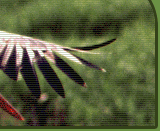| Project Title | Biotope classification of the Gauja National Park | | Project Duration | 1999-2001 | | Participants | Latvian Fund for Nature | | Funding | Latvian Environmental Protection Fund | | Project Area | Gauja National Park | | Co-ordinator | Ainārs Auniņš | | Contact | | Telephone | 7034894 | | Fax | 7830291 | | E-mail | dubults@lanet.lv | | Address | Rīga, Kronvalda Bulvāris 4 | | LV-1010, Latvia | Since the scanners on various satellites regularly record the intensity of reflection from the Earths surface, which depends on the land cover, and the images are freely sold, this is a convenient and comparatively inexpensive method of systematic monitoring over a large area. Digital classification of satellite images has been successfully applied in many parts of the world for various purposes, including the mapping and monitoring of land-use and vegetation. By comparing images taken in the same season over two or more years, it is possible to readily identify changes in vegetation or destruction of vegetation (for example clear-felling, burning etc.). Classified satellite images can be used to determine the distribution of land cover classes, select locations for activities etc. Within the frame of the project, on 2 August 1999, Landsat 7 ETM+ satellite images were obtained, subjected to digital classification with regard to the territory of the Gauja National Park. In the course of the classification work, test areas were studied in the field and the digital signatures of potential land cover classes were analysed. As a result, 31 land cover classes were distinguished, according to which the whole area of the national park was classified. These classes can be used for future monitoring, since they permit classification of Landsat satellite images taken in July and August of future years. |








